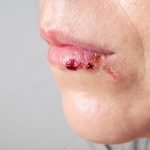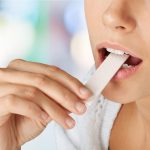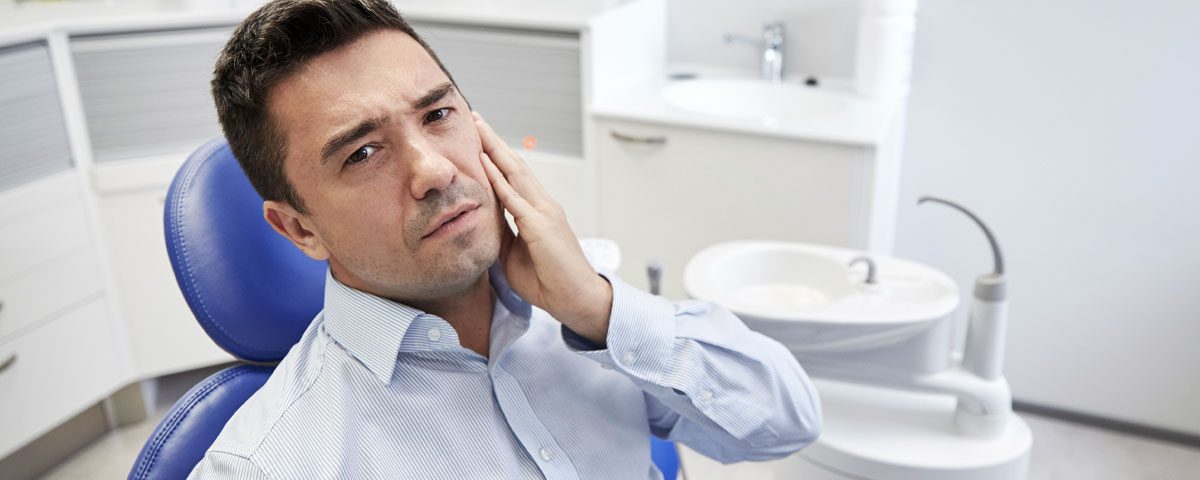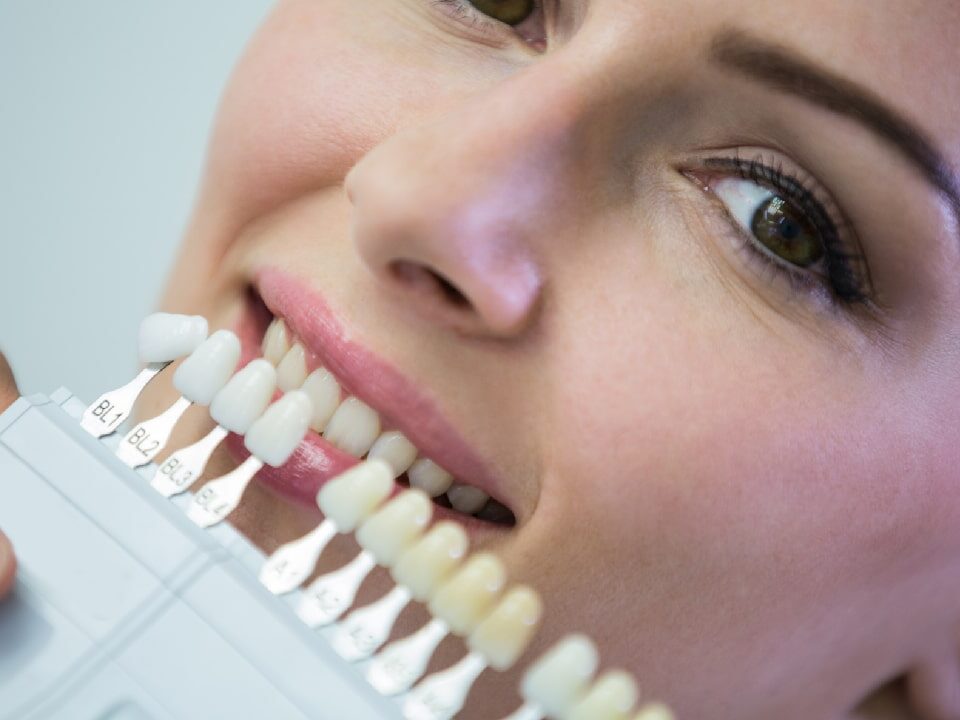
Venous Lake Lip vs Melanoma: The Differences
May 29, 2025
Can I Chew Gum After Wisdom Teeth Removal?
June 5, 2025Tooth pain after filling is really frustrating. You go to the dentist to fix a cavity, and now, even days later, your tooth still hurts. You might be wondering if something went wrong. Actually, pain after filling is more common than you think. Sometimes, it goes away on its own. But other times, it needs care. Let us tell you how to relieve pain in tooth after filling, both by using home remedies and by using professional help.
Table of Contents
ToggleHow to Relieve Tooth Pain after Filling?
A little soreness is normal after a filling. But if the pain sticks around or gets worse, it’s time to take action. These methods are what a dentist in Phoenix, AZ, recommends to stop tooth pain after filling:
Get Your Bite Checked
One of the top tips to reduce your pain after dental fillings is a bite that’s too high. That means the filled tooth touches first when you close your mouth. It causes pressure on that tooth, and over time, it starts to ache. You might feel it more when you chew or wake up with soreness.
You need to:
- Call your dentist and tell them the tooth feels high or sore.
- At the office, your dentist will have you bite on a thin piece of colored paper. This shows where your teeth are hitting.
- If the filled tooth is hitting too hard, the dentist will smooth it down with a tool.
This only takes about 10–15 minutes. You usually feel better the same day or within 24 hours. Remember that ignoring a high filling can lead to nerve problems, so it’s best to fix it early.
Use a Desensitizing Toothpaste
Sometimes, your teeth are just sensitive. You might feel a sharp twinge when you drink cold water or breathe in air. This tooth pain after filling happens because the nerve inside your tooth is still healing from the drilling and filling.
You can use toothpaste made for sensitive teeth. Look for ingredients like potassium nitrate or stannous fluoride. Then, brush your teeth gently twice a day with this toothpaste. After brushing, spit, but don’t rinse with water. Let the toothpaste stay on your teeth.
It can take up to 10 days to notice a difference. Keep using it even after the pain fades to protect your teeth long term. It is a safe, simple way to treat tooth pain after filling, especially if cold or hot things make your teeth hurt.
Take Anti-Inflammatory Medication
After a filling, your tooth nerve can get inflamed. This happens when the cavity is deep or close to the nerve. The tooth might feel sore, tight, or even throbbing. To calm that nerve and reduce tooth pain after filling, anti-inflammatory pain medicine works best.
Use ibuprofen (like Advil or Motrin) if your doctor says it’s okay. Take 400mg every 6 hours with food. If you can’t take ibuprofen, use acetaminophen (like Tylenol) instead. It helps with pain but doesn’t reduce swelling. Take it for 2 to 3 days to let the swelling inside the tooth go down. Don’t skip doses.
Keeping the medicine in your system helps more than taking it only when it hurts. If the tooth pain after filling comes back when you stop the medicine, call your dentist. It may be more than inflammation.
Use a Mouthguard at Night
You might not know you grind your teeth at night, but it can make your tooth with a new filling hurt. The pressure from grinding or clenching wears on the tooth and can damage the filling.
You need to:
- Ask your dentist if you might be grinding.
- They may suggest a night guard (a soft or hard plastic tray that fits over your teeth). You can also get one at the drugstore, but it won’t fit as well.
- Wear the guard every night while you sleep.
- It gives your filled tooth a break and helps it heal.
Avoid Hot and Cold Foods
Fresh tooth fillings Phoenix can make teeth more sensitive to temperature. Your tooth might not hurt all the time, but it could react sharply to ice water or hot coffee. That doesn’t always mean something is wrong; this tooth pain after filling is a part of healing.
To protect the tooth:
- Don’t eat ice or drink very cold water for at least 7 to 10 days after the filling.
- Skip hot soup, tea, and coffee during that time, too.
- Eat soft, room-temperature foods like mashed potatoes, rice, or bananas.
Note: If your tooth hurts with heat but not cold, this could be a sign of nerve trouble. Call your dentist right away. Also, changing your food temperature can really help reduce tooth pain after filling while your tooth settles down.
Reasons for Having Throbbing Tooth Pain after Filling
- The filling is too high or uneven.
- The cavity was deep and close to the nerve.
- The nerve inside the tooth is inflamed.
- You are grinding or clenching your teeth.
- There’s a crack in the tooth that wasn’t found earlier.
- The filling is leaking or not sealed properly.
What Causes Tooth Sensitivity after a Filling?
- The tooth is still healing from drilling.
- The filling is near the nerve.
- Your bite is off and causing pressure.
- You have metal fillings that react to temperature.
- There’s a small crack in the tooth.
- Cold air or drinks hit the nerve through thin enamel.
How Long Should a Tooth Hurt After a Filling?
| Time Since Filling | What You May Feel | Is This Normal? |
| Day 1–3 | Soreness, light pressure, mild twinges | Yes |
| Day 4–7 | Sensitivity to hot or cold, less soreness | Yes |
| Week 2 | Mild discomfort only with certain foods | Yes |
| Week 3–4 | Almost no pain, tooth feels normal | Yes |
| After 1 Month | No pain or sensitivity at all | Yes |
| After 6 Weeks | Still hurting or worsening pain | No — see your dentist |
Why Does My Tooth Filling Hurt after Months?
If your tooth pain after filling comes back after a few months, something could be wrong. The filling might be breaking down or leaking. The nerve inside the tooth might also be dying slowly, especially if the cavity is deep. In some cases, a crack in the dental filling Phoenix can get worse over time and cause pain when chewing.
If your tooth filling hurts after months, you need to call your dentist and explain what you feel. You may need an X-ray to check under the filling. If the nerve is damaged, the tooth may need a root canal. If you fix it early, it gives you the best chance to save the tooth and stop the pain.
Home Remedies for Toothache after Filling
If you can’t get to the dentist right away, some safe home steps can help manage tooth pain after filling. These won’t fix the problem, but they can bring relief for a little while.
Warm Saltwater Rinse
It can help clean the area and reduce swelling in the gums. You can:
- Heat one cup of water until warm (not hot).
- Add one teaspoon of salt and stir.
- Swish it in your mouth for 30 seconds, focusing on the sore side.
- Spit it out. Do not swallow.
- Repeat 3 or 4 times a day.
Cold Compress
This can help with tooth pain after filling and swelling, especially if your jaw feels sore. Wrap a towel around a bag of ice or frozen vegetables. Hold it against your cheek for 15 minutes. Then, remove for 15 minutes, then repeat if needed. Just do not put ice directly on your skin.
Clove Oil
Clove oil numbs pain and is safe to use in small amounts. You can go and buy clove oil at a pharmacy. Use a cotton swab or clean finger to apply a tiny drop on the sore tooth. Avoid swallowing it. You can use this method up to 3 times a day.
Keep Your Head Elevated
Lying flat can make blood pool near the sore tooth, which makes the pain worse. You need to:
- Use two pillows to keep your head higher than your chest when resting or sleeping.
- Try not to lie on the side where the tooth hurts.
Treat Pain in Tooth after Filling in Phoenix, Arizona
If you are dealing with tooth pain after filling, Atrium Dental in Phoenix can help. We treat all kinds of dental pain, including problems after fillings. Whether your bite needs adjusting, your nerve is inflamed, or your tooth needs more care, our team is ready.
We use advanced X-rays, custom treatment plans, and gentle care to find the cause and fix it quickly. You don’t need to wait or suffer. Schedule your visit online today, and let’s get your tooth back to normal.
Let’s Recap
Tooth pain after filling is common, but it doesn’t have to last. A sore bite, nerve irritation, or temperature sensitivity can all cause pain. The good news? Most of the time, these problems are easy to fix. Just don’t wait if the pain doesn’t go away. The sooner you act, the easier it is to fix.
FAQs
How to stop tooth pain after cavity filling?
Check your bite, use sensitive toothpaste, and take pain meds if needed. See your dentist if it doesn’t go away.
What is the 3-3-3 rule for toothache?
Take 3 ibuprofen. Take it 3 times a day, and for 3 days. But only if your doctor approves.
How long should a tooth hurt after a filling?
Mild pain can last up to 2 weeks. Pain longer than that needs a dentist visit.
Why does my toothfilling hurt after years?
It might be a cracked filling or a dying nerve. You’ll need an exam and an X-ray.
How to make a filling hurt less?
Avoid hard or hot foods, use a night guard, and treat with pain meds or sensitive toothpaste.
Is it normal to experience sensitivity after a dental filling?
Yes, for a few days or even weeks. But it should slowly get better.



